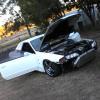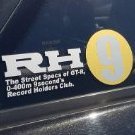1991 R32 GTR Brake Booster
Announcements
-
Similar Content
-
Latest Posts
-
IMG_8641.mov She doesn’t sound the best but starts with out using any gas now. I just ran some injector cleaner through her. started roughly the first time after adding it but gave it the beans slowly upto 4k, Must have cleaned a few cobwebs out. another step in the right direction for the sub
-
Sadly I can confirm if you are actually seeking to drift, you will quite easily spin up one wheel. Even if you're going in a straight line. I am not entirely sure of the metrics/terminology here but there's only a certain amount that the helical will actually spin both wheels. I've seen it on video with my own car where two lines of smoke switch over to just one after you really get in to it. Unlike with a clutch diff where you can keep your foot planted until the car regains grip, in my experience with the helical you want to be utilizing traction control allowing LIMITED slip or lifting (partially) when you start to spin up both tyres with a Nissan helical. Which makes them pretty sub optimal for drifting duty. That said... this is probably a helical on numbers alone. Just put the Kazz in
-
Unlikely, as per Greg's post. This is not helical diff behaviour unless one wheel is up off the ground. Shimming what? You don't "shim" a mechanical LSD. Probably not in the sense that you have heard of people "shimming" a diff. And the process that Nissan f**kwits call "shimming" a diff involves super-preloading a VLSD cartridge against the side of the diff to create a friction/wear point (in a place that it wasn't supposed to have one) to make the sloppy, useless, viscous diff into a hybrid viscous/mech abortion. In case it isn't clear, I consider the process to be stupid. Nike.
-
How much does the shifter move when the car is in gear with the engine off? If it is more than about 1cm you need to replace your shifter bush. Your shifts will just get crunchier, not faster, with a short shifter unless you also rebuild the whole box
-







Recommended Posts
Create an account or sign in to comment
You need to be a member in order to leave a comment
Create an account
Sign up for a new account in our community. It's easy!
Register a new accountSign in
Already have an account? Sign in here.
Sign In Now